Layoffs are as devastating as they are necessary. From jumbled emotions to reduced productivity, corporate restructuring leaves businesses and their employees dealing with unfavorable consequences.
But how devastating are the effects of employee cutbacks on a company, the victims, and the survivors? This was the motivating question behind our layoff aftermath survey for 2022. In this survey, the focus was on understanding how mass layoffs affect businesses and employees.
To draw our conclusions, BizReport surveyed 2162 US respondents. From this sample size, 16% were decision-makers in layoffs, 48% were layoff victims, and 36% were layoff survivors. In their respective groups, the participants were asked to respond to nearly 30 questions about layoff consequences, future employment and attitudes, and sentiments following layoffs. This article summarizes the findings.
Key Findings
How do Layoffs Affect
Companies, Victims, and Survivors?
Downsizing comes with significant consequences for companies and their employees. This survey has grouped these effects into five main categories.
The categories include the psychological effect of layoffs on victims and survivors, the impact of discharges on attitudes and the future of employment, the financial impact of downsizing, changes in employee behavior and feelings, and lastly, the state of layoffs in the U.S. for the next 12 months. Let's go over each of these sections.
I. Layoffs Affect the Mental Health of Both Layoff Victims and Survivors

We also learned that anxiety, frustration, and sadness were the top three feelings that people most often felt after losing their jobs.
The table below lists all the common feelings that layoff victims experience and the percentage of individuals who experience them.
Common feelings of layoff victims after losing their jobs
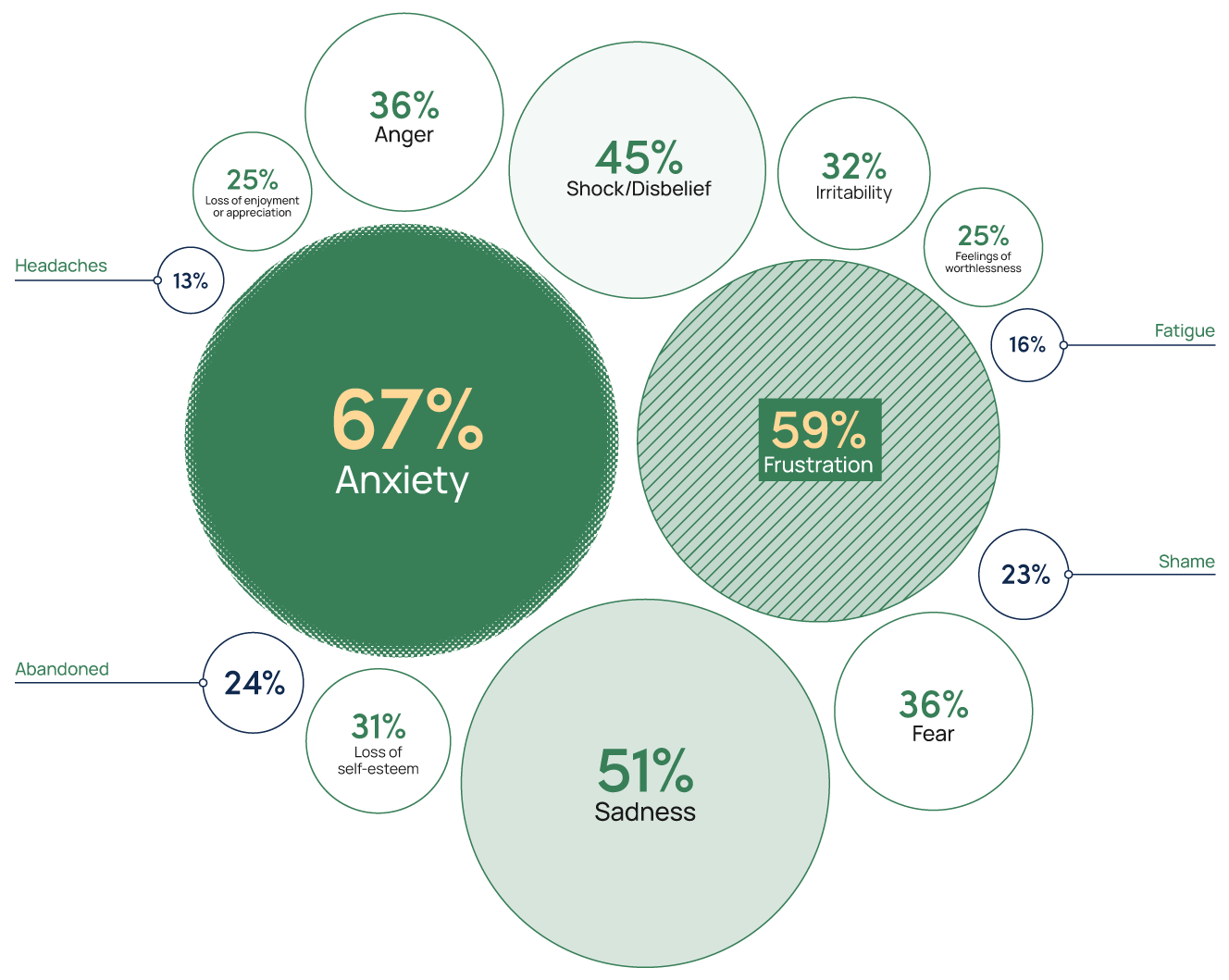
Those who retained their jobs after a layoff period also had a host of negative feelings. For survivors, anxiety, sadness, and shock are the three most common emotions that spring up after downsizing.
Here's a list of the common feelings that layoff survivors deal with and the percentage of individuals who struggle with each emotion.
Common feelings of layoff survivors after seeing their colleagues get laid off
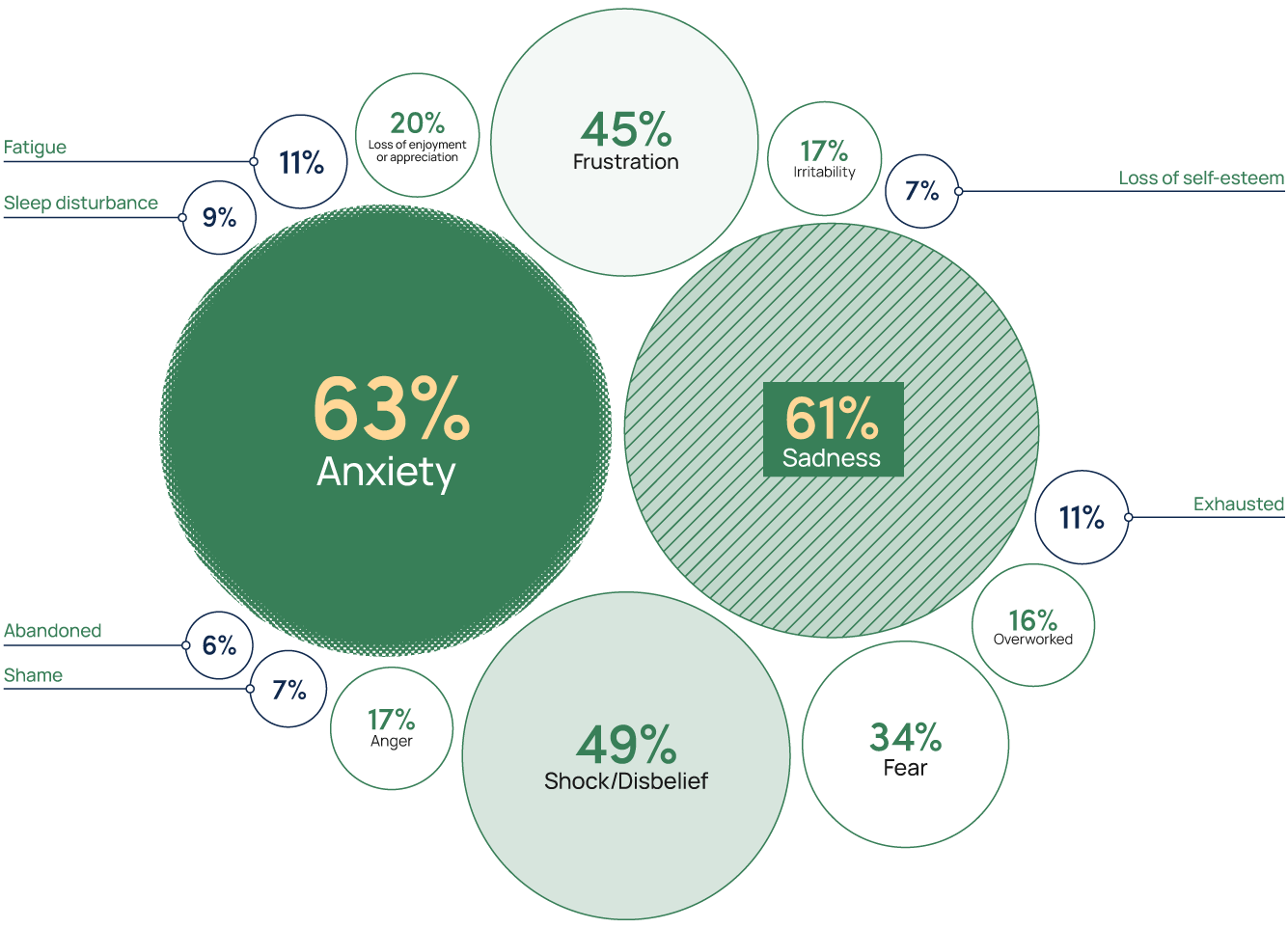
Survivors' guilt is also a familiar feeling among those retained after a layoff. At least 52% of the survivors surveyed reported feeling guilty when they realized they got to keep their jobs, but others didn't.
II. Layoffs can Affect Future Employment and Attitudes.
Layoffs have negative effects right away, but they can also change how people feel about work in the future. The numbers from this survey show that 60% of people who have been laid off are less likely to trust their next employers.
Let's look at some of the most common effects of being laid off on future employers that this survey found.
-
19% I'm more likely to quit my next job
-
23% I more likely to take jobs that were below my capabilities
-
36% I have lower expectations for my next company
-
44% My motivation to contribute at my next job is decreased
-
51% My trust in long-term work is decreasing
-
60% I'm less likely to trust my next employer
Besides giving victims employment trauma, layoffs also affect the degree of work that the victim will take up next. For people who have experienced multiple layoffs, each new layoff increases the likelihood that they will accept a job that is below their capabilities. 31% of layoff victims in the survey said they need more than six months to find new jobs. As such, many layoff victims end up settling for what is available to avoid lacking financially.
Another 45% of laid-off workers agreed that layoffs reduce their chances of finding new employment. This is often the case because layoffs tend to demoralize victims. This makes them unwilling to make significant job-search efforts that will land them roles similar to the ones they lost.
Related Articles
III. Layoff Victims Are Facing Significant Financial Difficulties
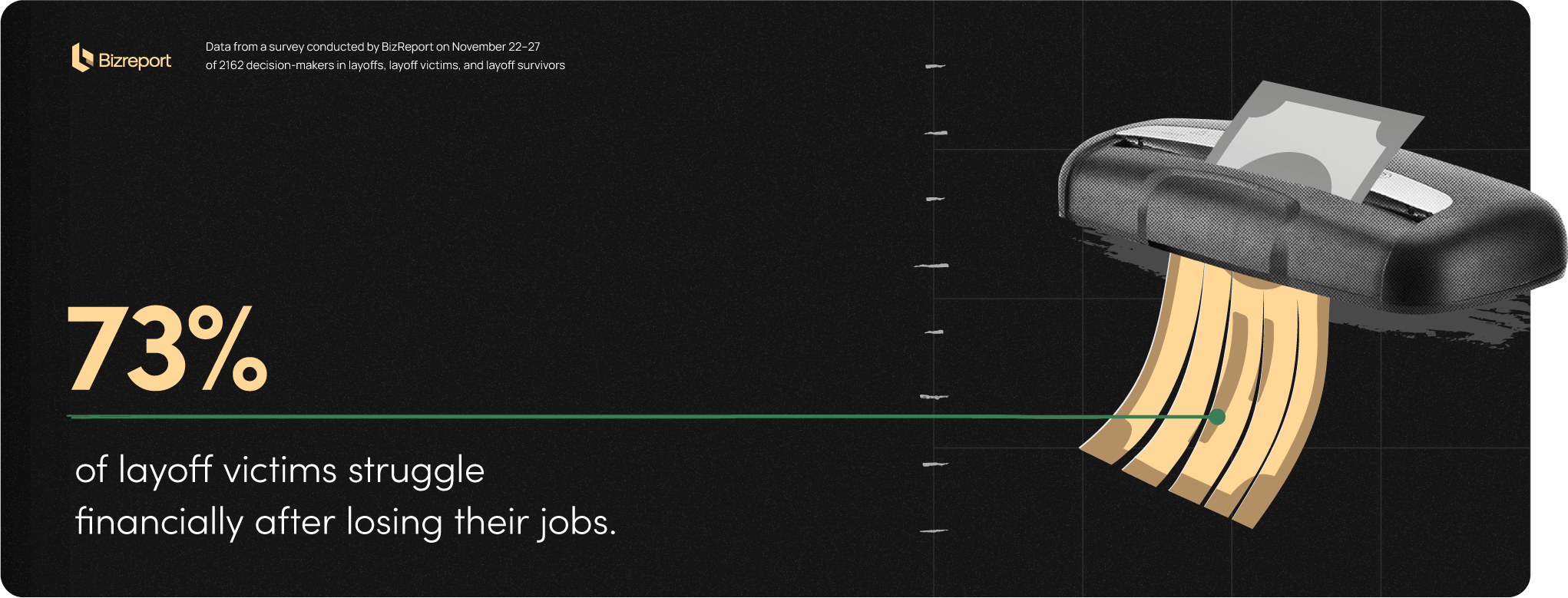
Financial instability is perhaps one of the most significant implications of downsizing for victims. When we asked respondents if they experienced financial difficulties after losing their jobs, 73% of layoff victims said thay did.
Even worse, 69% of people who were laid off didn't get any help from their former employers. This means they lost their income and did not receive any long-term form of financial aid or benefit from the organizations they worked for.

69% of layoff victims didn't receive any form of support from their former employers.
IV. Layoff Survivors Exhibit Negative Behaviors and Feelings
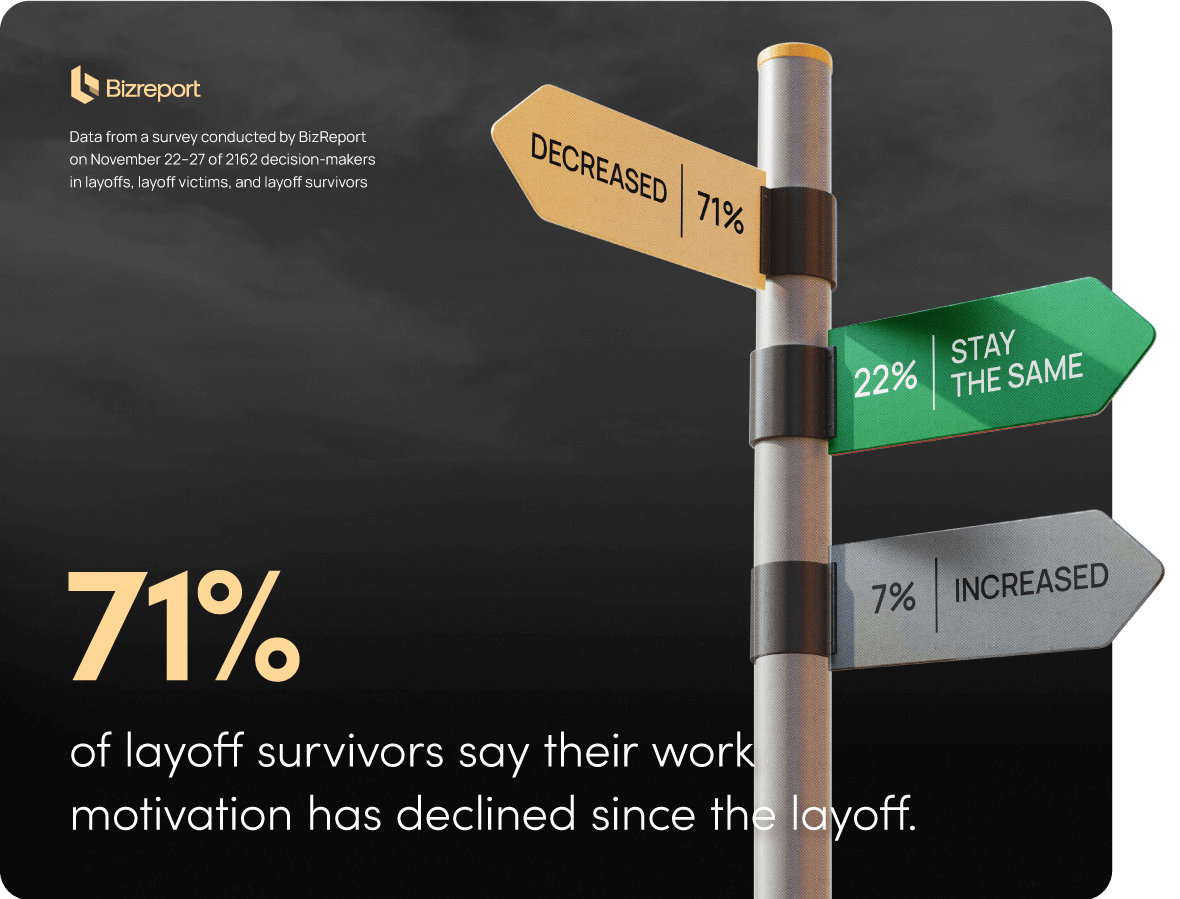
The aftermath of a layoff spreads beyond the layoff victims. Layoff survivors are also heavily affected by employee cutback efforts. Even though they are grateful to still have a source of income, 71% of layoff survivors say their work motivation has declined since the layoff.
22% of the people who answered this survey's questions said that being laid off didn't change their desire to work, while 7% said that it did. It is not uncommon to see some increased productivity after a layoff. Some employees tend to improve their performance as a way to ensure they are retained should another round of layoffs hit the company.
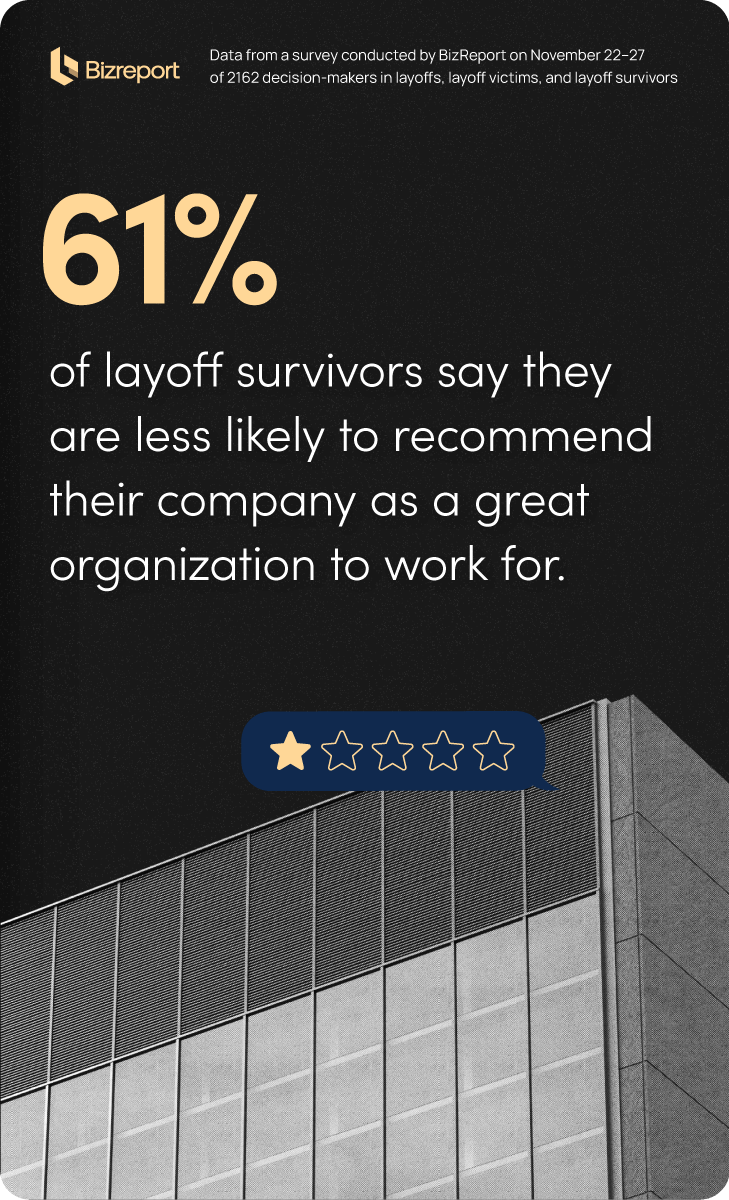
Another sentiment that layoff survivors portrayed during the survey was feeling overworked. 65% of layoff survivors say they have been overworked since the layoff because they also had to perform the tasks that their laid-off counterparts used to perform.
61% of layoff survivors also reported that they are less likely to recommend their company as a great organization to work for. A major reason behind this is that one-third, or about 33%, of those who survived a layoff, believe that things will worsen for their company in the future.
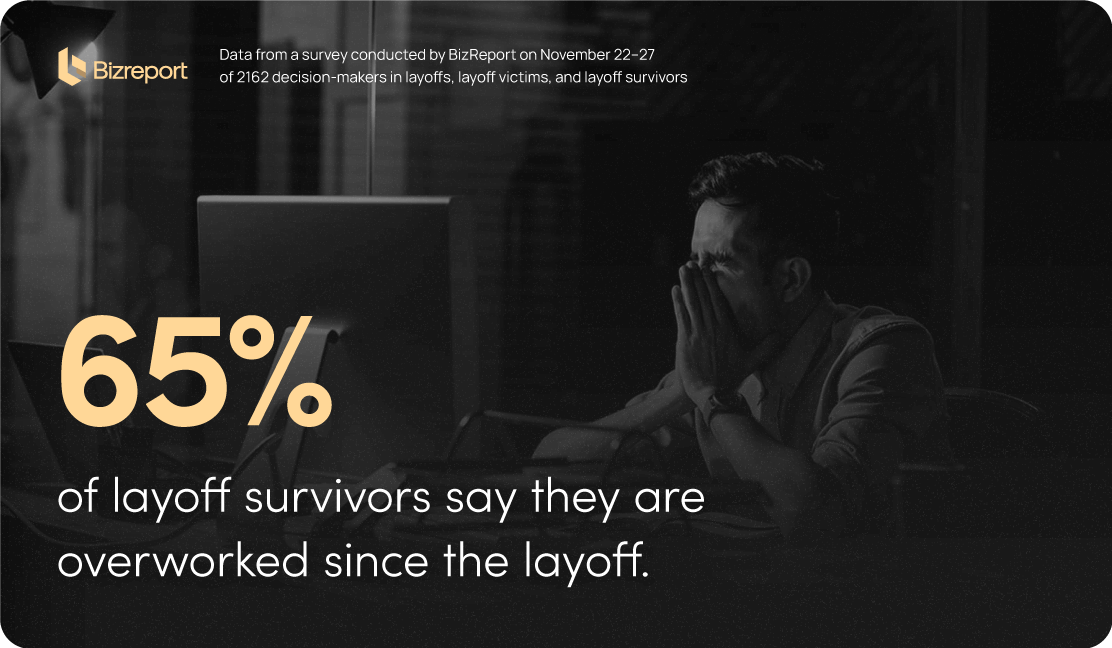

V. More Layoffs Are Coming in the Next 12 Months
The U.S. economy is having trouble because inflation is going up and the Gross Domestic Product rate is going down. These two factors are closely related to the massive job cuts ravaging the country and those yet to come.
While inflation remains high, companies tend to seek budget cuts to stay afloat. Similarly, while the GDP is low, demand is also low, and so is the production rate. For this reason, companies prefer to cut back on employees. In fact, 83% of U.S. business leaders believe layoffs are the right decision to make in such scenarios.
During the survey, these business leaders also said that 40% of U.S. companies expect to lay off more workers in the next year. Their views were based on the prediction of the country's economic status within the said period.
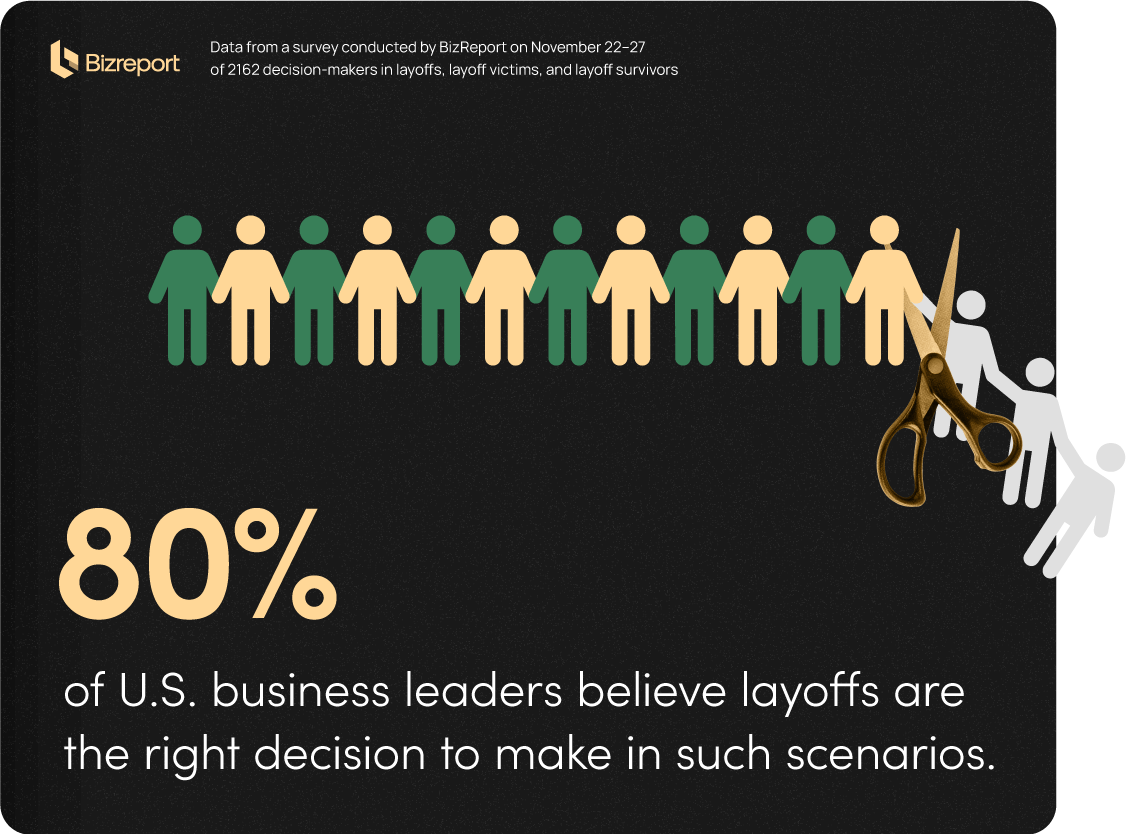
Layoffs Are Inevitable, But They Can Be Made Less Devastating For All Involved
Layoffs have far-reaching effects on companies, victims, and survivors, most of which are negative. Downsizing can lead to mental health challenges and financial difficulties for victims. It can also negatively affect survivors' emotions and cast a dark shadow on their future employment prospects.
Despite this, layoffs are inevitable, especially when the economy is weak. So, the best approach for this is to try and make the experience as bearable as possible for all involved. Layoffs decision-makers need to have the best interest of their employees at heart when making cutback decisions.
Here are three key areas that decision-makers can focus on to make the layoff transition as smooth as possible.
- Facilitate Open Communication Flow: Layoffs are periods of high uncertainty and the lack of communication makes them even more unbearable. Layoff decision-makers should avoid being so cloak-and-dagger about the situation and instead let employees in on important details concerning the layoffs. This communication flow should also allow employees to air out their views and get the best possible response to quell their rising fears.
- Be Candid: Managers should walk employees through the rationale behind the company's downsizing decisions. They should make an effort to explain the various options that were evaluated to help employees deal with the cutback as smoothly as possible. If the firm is assisting layoff victims by offering severance packages and career transition assistance, for example, they should share those facts. If they suspend some employees rather than laying them off, and there are plans to rehire them after the economy improves, they should clarify the same. This helps employees realize that although management is restructuring for the long-term good of the company, it still has their best interests at heart. Such a realization will drive employees to respond with their best efforts.
- Post-Layoff Aid for Victims: Companies anticipating a layoff period should plan for a compensation plan to give the victims. This can come in the form of post-layoff salaries for a period of time to help them cope as they find other jobs. Such aid also leaves survivors feeling a bit more valued by the company and employees need to try and adjust to the new order as best as possible.

Study Methodology
Between November 22 and November 27, 2022, BizReport surveyed 2162 US respondents, including decision-makers in layoffs (16%), layoff victims (48%), and layoff survivors (36%).
Participants were divided into three groups and asked to respond to nearly 30 questions about layoff consequences, future employment & attitudes, and sentiments following layoffs.
Attention-checker questions were included to ensure the participants did not mindlessly answer questions. Any unqualified responses were excluded from our results. Open-ended questions are used in the survey, and the answers to those questions are standardized later on.